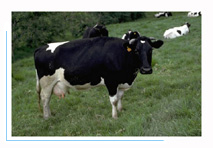Zoonoses and veterinary public health (VPH)
Any disease or infection that is naturally transmissible from vertebrate animals to humans and vice-versa is classified as a zoonosis according to the PAHO publication "Zoonoses and communicable diseases common to man and animals". Over 200 zoonoses have been described and they have been known for many centuries. They are caused by all types of agents: bacteria, parasites, fungi, viruses and unconventional agents.
Some examples of zoonoses, classified according to the type of causative agent, are given hereafter.
Zoonoses still represent significant public health threats, but many of them are neglected, i.e. they are not prioritized by health systems at national and international levels. They affect hundreds of thousands of people especially in developing countries, although most of them can be prevented.
-
The FAO-OIE-WHO Collaboration
pdf, 418kb
Sharing responsibilities and coordinating global activities to address health risks at the animal-human-ecosystems interfaces. A Tripartite Concept Note, April 2010 -
Managing zoonotic public health risks at the human-animal-environment interface
pdf, 136kb - Emerging zoonoses
- Veterinary Public Health (VPH)
- The control of neglected zoonotic diseases





